 W
WAdvertising is a marketing communication that employs an openly sponsored, non-personal message to promote or sell a product, service or idea. Sponsors of advertising are typically businesses wishing to promote their products or services. Advertising is differentiated from public relations in that an advertiser pays for and has control over the message. It differs from personal selling in that the message is non-personal, i.e., not directed to a particular individual. Advertising is communicated through various mass media, including traditional media such as newspapers, magazines, television, radio, outdoor advertising or direct mail; and new media such as search results, blogs, social media, websites or text messages. The actual presentation of the message in a medium is referred to as an advertisement, or "ad" or advert for short.
 W
WAn advertising campaign is a series of advertisement messages that share a single idea and theme which make up an integrated marketing communication (IMC). An IMC is a platform in which a group of people can group their ideas, beliefs, and concepts into one large media base. Advertising campaigns utilize diverse media channels over a particular time frame and target identified audiences.
 W
WAdvertising management is a planned managerial process designed to oversee and control the various advertising activities involved in a program to communicate with a firm's target market and which is ultimately designed to influence the consumer's purchase decisions. Advertising is just one element in a company's promotional mix and as such, must be integrated with the overall marketing communications program. Advertising is, however, the most expensive of all the promotional elements and therefore must be managed with care and accountability. Advertising management process also helps in defining the outline of the media campaign and in deciding which type of advertising would be used before the launch of a product.
 W
WThe American Institute of Graphic Arts (AIGA) is a professional organization for design. Its members practice all forms of communication design, including graphic design, typography, interaction design, user experience, branding and identity. The organization's aim is to be the standard bearer for professional ethics and practices for the design profession. There are currently over 18,000 members and 73 chapters, and more than 200 student groups around the United States. In 2005, AIGA changed its name to “AIGA, the professional association for design,” dropping the "American Institute of Graphic Arts" to welcome all design disciplines.
 W
WThe Apple Multimedia Lab was a pioneering electronic media research group operated by Apple Computer. It was founded in 1987 by cognitive psychologist Kristina Hooper Woolsey and educational psychologist Sueann Ambron.
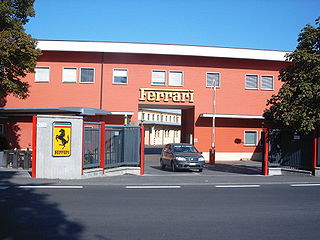 W
WA brand is a name, term, design, symbol or any other feature that identifies one seller's good or service as distinct from those of other sellers. Brands are used in business, marketing, and advertising for recognition and, importantly, to create and store value as brand equity for the object identified, to the benefit of the brand's customers, its owners and shareholders. Name brands are sometimes distinguished from generic or store brands.
 W
WCentral Saint Martins (CSM) is a public tertiary art school in London, England. It is a constituent college of the University of the Arts London. It offers full-time courses at foundation, undergraduate and postgraduate levels, and a variety of short and summer courses.
 W
WChalcography, are engravings on copper plates used for printmaking and illustrations, although the term has also been used of engravings on any type of metal. The Monte dei Santi di Dio by Antonio Bettini is the most ancient book bearing chalcographies, printed in Florence on September 10, 1477 from Nicolo di Lorenzo Tedesco. Its primacy is contested by Ptolemy's Cosmographia, printed in Bologna on June 23, 1477 from Domenico de' Lapi, a Latin translation from Jacopo d'Angelo, containing geographical charts and maps by Taddeo Crivelli, engraved in copper plates.
 W
WCommercial art is the art of creative services, referring to art created for commercial purposes, primarily advertising. Commercial art uses a variety of platforms for viewers with the intent of promoting sale and interest of products, services, and ideas. It relies on the iconic image to enhance recall and favorable recognition for a product or service. An example of a product could be a magazine ad promoting a new soda through complementary colors, a catchy message, and appealing illustrative features. Another example could be promoting the prevention of global warming by encouraging people to walk or ride a bike instead of driving in an eye catching poster. It communicates something specific to an audience.
 W
WCommunication Arts is the largest international trade journal of visual communications. Founded in 1959 by Richard Coyne and Robert Blanchard, the magazine's coverage includes graphic design, advertising, photography, illustration, and interactive media. The magazine continues to be edited and published under the guidance of Coyne's wife Jean and their son Patrick Coyne. Currently, Communication Arts (CA) publishes six issues a year and hosts six creative competitions in graphic design, advertising, photography, illustration, typography and interactive media and two Web sites, commarts.com and creativehotlist.com
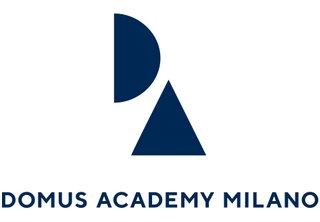 W
WDomus Academy is a private school of design in Milan, Italy. It offers post-graduate and professional courses in fashion, industrial design, and design management. It is not listed by the Ministero dell'Istruzione, dell'Università e della Ricerca, the Italian ministry of education, among the institutions authorised to award degrees in music, dance and the arts.
 W
WJohanna Drucker is an American author, book artist, visual theorist, and cultural critic. Her scholarly writing documents and critiques visual language: letterforms, typography, visual poetry, art, and lately, digital art aesthetics. She is currently the Martin and Bernard Breslauer Professor in the Department of Information Studies at the Graduate School of Education and Information Studies at UCLA.
 W
We-Types is a brand agency based in Copenhagen. It employs 50 designers, strategists and account managers. Since 2006 e-Types has been subject to academic research by scholars from Copenhagen Business School and Harvard Business School.
 W
WEducational entertainment is media designed to educate through entertainment and a term used as early as 1954 by Walt Disney. Most often it includes content intended to teach but has incidental entertainment value. It has been used by academia, corporations, governments, and other entities in various countries to disseminate information in classrooms and/or via television, radio, and other media to influence viewers' opinions and behaviors.
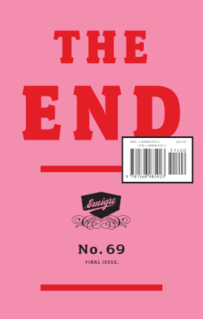 W
WEmigre was an award-wining (mostly) quarterly magazine published from 1984 until 2005 in Berkeley, California dedicated to visual communication, graphic design, typography, and design criticism. Produced by Rudy VanderLans and Zuzana Licko, Emigre was known for creating some of the very first digital layouts and typeface designs. Exposure to Licko's typefaces through the magazine lead to the creation of Emigre Fonts in 1985.
 W
WEntertainment-Education (EE) is a communication strategy that aims to alleviate a social issue or educate the public through a custom-tailored piece of entertainment. It is defined by a set of techniques and methodologies which all aim to use various levels of mass media to communicate social and behavior change.
 W
WExhibit design is the process of developing an exhibit—from a concept through to a physical, three-dimensional exhibition. It is a continually evolving field, drawing on innovative, creative, and practical solutions to the challenge of developing communicative environments that ‘tell a story’ in a three-dimensional space.
 W
WEye magazine, the international review of graphic design, is a quarterly print magazine on graphic design and visual culture.
 W
WFlat Eric is a puppet character, created by Quentin Dupieux, from Levi's commercials for Sta-Prest One Crease Denim Clothing, built by Jim Henson's Creature Shop. His name comes from an idea for a commercial that involved having a car run over his head and flattening it. The idea was not used, but the name stuck.
 W
WA category of fine art, graphic art covers a broad range of visual artistic expression, typically two-dimensional, i.e. produced on a flat surface. The term usually refers to the arts that rely more on line or tone than on colour, especially drawing and the various forms of engraving; it is sometimes understood to refer specifically to printmaking processes, such as line engraving, aquatint, drypoint, etching, mezzotint, monotype, lithography, and screen printing. Graphic art further includes calligraphy, photography, painting, typography, computer graphics, and bindery. It also encompasses drawn plans and layouts for interior and architectural designs.
 W
WGraphic communication as the name suggests is communication using graphic elements. These elements include symbols such as glyphs and icons, images such as drawings and photographs, and can include the passive contributions of substrate, color and surroundings. It is the process of creating, producing, and distributing material incorporating words and images to convey data, concepts, and emotions.
 W
WGraphic design is the art, profession and academic discipline whose activity consists in projecting visual communications intended to transmit specific messages to social groups, with specific objectives. Therefore, it is an interdisciplinary branch of design whose foundations and objectives revolve around the definition of problems and the determination of objectives for decision-making, through creativity, innovation and lateral thinking along with digital tools, transforming them for proper interpretation. This activity helps in the optimization of graphic communications (see also communication design). It is also known as visual communication design, visual design or editorial design.
 W
WThe history of advertising can be traced to ancient civilizations. It became a major force in capitalist economies in the mid-19th century, based primarily on newspapers and magazines. In the 20th century, advertising grew rapidly with new technologies such as direct mail, radio, television, the internet and mobile devices.
 W
WAn illustration is a decoration, interpretation or visual explanation of a text, concept or process, designed for integration in print and digital published media, such as posters, flyers, magazines, books, teaching materials, animations, video games and films. An illustration is typically created by an illustrator. Digital illustrations are often used to make websites and apps more user-friendly, such as the use of emojis to accompany digital type. Illustration also means providing an example; either in writing or in picture form.
 W
WThe International Council of Design is an international organisation representing the professions of design. The Council was founded in London in 1963 and celebrated its 50th anniversary on 27 April 2013. It is a non-profit, non-partisan, "member-based network of independent organisations and stakeholders working within the multidisciplinary scope of design."
 W
WThe International Typographic Style, also known as the Swiss Style, is a graphic design style that emerged in Russia, the Netherlands, and Germany in the 1920s and was further developed by designers in Switzerland during the 1950s. The International Typographic Style has had profound influence on graphic design as a part of the modernist movement, impacting many design-related fields including architecture and art. It emphasizes cleanness, readability, and objectivity. Hallmarks of the style are asymmetric layouts, use of a grid, sans-serif typefaces like Akzidenz Grotesk, and flush left, ragged right text. The style is also associated with a preference for photography in place of illustrations or drawings. Many of the early International Typographic Style works featured typography as a primary design element in addition to its use in text, and it is for this that the style is named. The influences of this graphic movement can still be seen in design strategy and theory to this day.
 W
WMona Kim is a Korean-American designer born in South Korea and educated in the United States. Kim is a multidisciplinary design consultant and a visual artist for cultural and commercial projects.
 W
WA style guide, or style manual, is a set of standards for the writing and design of documents, either for general use or for a specific publication, organization or field. The implementation of a style guide provides uniformity in style and formatting within a document and across multiple documents. A set of standards for a specific organization is often known as "house style". Style guides are common for general and specialized use, for the general reading and writing audience, and for students and scholars of various academic disciplines, medicine, journalism, the law, government, business, and industry.
 W
WLithography is a method of printing originally based on the immiscibility of oil and water. The printing is from a stone or a metal plate with a smooth surface. It was invented in 1796 by German author and actor Alois Senefelder as a cheap method of publishing theatrical works. Lithography can be used to print text or artwork onto paper or other suitable material.
 W
WA logo is a graphic mark, emblem, or symbol used to aid and promote public identification and recognition. It may be of an abstract or figurative design or include the text of the name it represents as in a wordmark.
 W
WMotion graphic design, also known as motion design, is a subset of graphic design in that it uses graphic design principles in a filmmaking or video production context through the use of animation or filmic techniques. Examples include the kinetic typography and graphics used in film and television opening sequences, and the spinning, three-dimensional station identification logos of some television channels. This art form has been around for decades, and has advanced in technical sophistication over time.
 W
WA mult box is "a metal box with multiple outputs of a single audio source ." A mult box is sometimes called a press box, but that term is usually reserved for the sports media's section of an arena. It may also be called a press mult box or press bridge. The sound engineer connects several microphones to allow all of them to get clean, high-quality audio.
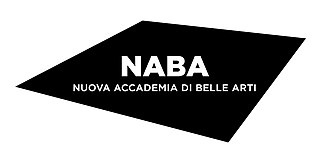 W
WThe Nuova Accademia di Belle Arti, "New Academy of Fine Arts", also known as NABA, is a privately run university in Milan, Lombardy, Italy. It has approximately 3000 students, some of whom are from abroad; it participates in the Erasmus Programme.
 W
WIn graphic design, page layout is the arrangement of visual elements on a page. It generally involves organizational principles of composition to achieve specific communication objectives.
 W
WA poster is a temporary promotion of an idea, product, or event put up in a public space for mass consumption. Typically, posters include both textual and graphic elements, although a poster may be either wholly graphical or wholly text. Posters are designed to be both eye-catching and informative. Posters may be used for many purposes. They are a frequent tool of advertisers, propagandists, protestors, and other groups trying to communicate a message. Posters are also used for reproductions of artwork, particularly famous works, and are generally low-cost compared to the original artwork. The modern poster, as we know it, however, dates back to the 1840s and 1850s when the printing industry perfected colour lithography and made mass production possible.
 W
WPrint design, a subset of graphic design, is a form of visual communication used to convey information to an audience through intentional aesthetic design printed on a tangible surface, designed to be printed on paper, as opposed to presented on a digital platform. A design can be considered print design if its final form was created through an imprint made by the impact of a stamp, seal, or dye on the surface of the paper.
 W
WPrint is an American design and culture website that began as Print, A Quarterly Journal of the Graphic Arts, in 1940, and continued publishing a physical edition through the end of 2017 as Print.
 W
WPublic relations (PR) is the practice of deliberately managing the release and spread of information between an individual or an organization and the public in order to affect the public perception. Public relations (PR) and publicity differ in that PR is controlled internally, whereas publicity is not controlled and contributed by external parties. Public relations may include an organization or individual gaining exposure to their audiences using topics of public interest and news items that do not require direct payment. This differentiates it from advertising as a form of marketing communications. Public relations aims to create or obtain coverage for clients for free, also known as earned media, rather than paying for marketing or advertising. But in the early 21st century, advertising is also a part of broader PR activities.
 W
WRock 'N Learn is an American children's educational program brand. It covers many of the necessary elements of learning children encounter throughout childhood. Topics include fundamentals for young children such as the English alphabet, to a higher level for children who may have difficulty learning multiplication tables, to those for teenagers in high school who need to improve their writing skills. Releases—of titles—today include DVD and digital copy download formats and CDs and books. However, titles—released on video and audio versions—were formerly available on the VHS video cassette tapes and audio cassettes with books.Multiplication Rock was the first title published in 1987.
 W
WThe Royal College of Art (RCA) is a public research university in London, United Kingdom, with campuses in South Kensington, Battersea and White City. It is the only entirely postgraduate art and design university in the United Kingdom. It offers postgraduate degrees in art and design to students from over 60 countries.
 W
WA slide chart is a hand-held device, usually of paper, cardboard, or plastic, for conducting simple calculations or looking up information. A circular slide chart is sometimes referred to as a wheel chart or volvelle.
 W
WSocial Impact Entertainment (SIE) is a variety of mainstream entertainment forms, predominantly films and TV, that intend to have social impact next to great entertainment value.
 W
WThe Society of Graphic Designers of Canada (GDC) is Canadaʼs national certification body for graphic and communication design and since 1956 has established standards for design professionals, educators, and leaders. GDC licenses and certifies members whose services the standardized criteria. GDC was Canada’s first distinct group to professionalize graphic design as a distinct field.
 W
WA style guide or manual of style is a set of standards for the writing, formatting and design of documents. It is often called a style sheet, although that term also has other meanings. The standards can be applied either for general use, or be required usage for an individual publication, a particular organization, or a specific field.
 W
WThe Tango Desktop Project was an open-source initiative to create a set of design guidelines and to provide a consistent user experience for applications on desktop environments. The project created a set of icons known as the Tango Icon Library and that were described as a "proof of concept". The Tango Desktop Project was a project of freedesktop.org, and was closely linked with other freedesktop.org guidelines, such as the Standard Icon Theming Specification.
 W
WA trailer is a commercial advertisement for a feature film that will be exhibited in the future at a movie theater/cinema, the result of creative and technical work. The term "trailer" dates back to the distribution of movies on reels of film. The reels were always distributed un-rewound. Therefore, the end of the movie was the most accessible part, to which previews were spliced, "trailing" the film.
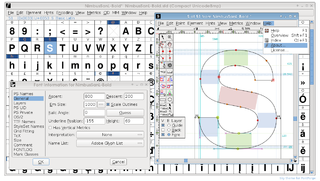 W
WType design is the art and process of designing typefaces. It is often used synonymously with the term "font design," because most non-designers refer to fonts, rather than typefaces.
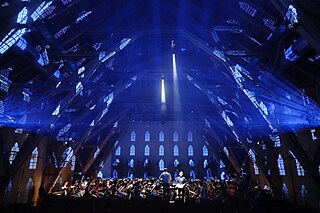 W
WVideo design or projection design is a creative field of stagecraft. It is concerned with the creation and integration of film, motion graphics and live camera feed into the fields of theatre, opera, dance, fashion shows, concerts and other live events. Video design has only recently gained recognition as a separate creative field. Prior to this, the responsibilities of video design would often be taken on by a scenic designer or lighting designer. A person who practices the art of video design is often known as a Video Designer. However, naming conventions vary around the world, and so practitioners may also be credited as Projection Designer, "Media Designer", Cinematographer or Video Director. As a relatively new field of stagecraft, practitioners create their own definitions, rules and techniques.
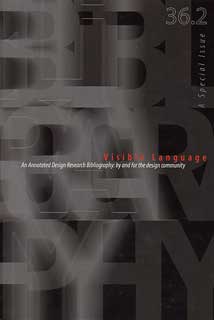 W
WVisible Language is an American journal presenting visual communication research. Founded in 1967 as The Journal of Typographical Research by Merald Wrolstad, occasional Visible Language issues are co-edited with a guest editor-author.
 W
WThe visual arts are art forms such as painting, drawing, printmaking, sculpture, ceramics, photography, video, filmmaking, design, crafts and architecture. Many artistic disciplines such as performing arts, conceptual art, and textile arts also involve aspects of visual arts as well as arts of other types. Also included within the visual arts are the applied arts such as industrial design, graphic design, fashion design, interior design and decorative art.
 W
WVisual communication is the use of visual elements to convey ideas and information which include but are not limited to, signs, typography, drawing, graphic design, illustration, industrial design, advertising, animation, and electronic resources. There are five types of characteristics when it comes to visual elements, they comprise of objects, models, graphs, maps and photographs. Outside the different types of characteristics and elements, there are seven components of visual communication: Color, Shape, Tones, Texture, Figure-Ground, Balance, and Hierarchy.
 W
WA volvelle or wheel chart is a type of slide chart, a paper construction with rotating parts. It is considered an early example of a paper analog computer. Volvelles have been produced to accommodate organization and calculation in many diverse subjects. Early examples of volvelles are found in the pages of astronomy books. They can be traced back to "certain Arabic treatises on humoral medicine" and to the Persian astronomer, Abu Rayhan Biruni, who made important contributions to the development of the volvelle.
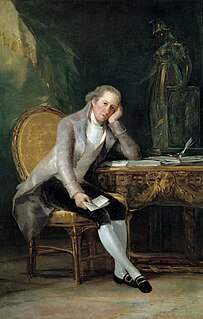 W
WA writer is a person who uses written words in different styles and techniques to communicate ideas. Writers produce different forms of literary art and creative writing such as novels, short stories, books, poetry, plays, screenplays, teleplays, songs, and essays as well as other reports and news articles that may be of interest to the public. Writers' texts are published across a range of media. Skilled writers who are able to use language to express ideas well, often contribute significantly to the cultural content of a society.
 W
WZurich University of the Arts has approximately 2,500 students, which makes it the largest arts university in Switzerland. The university was established in 2007, following the merger between Zurich's School of Art and Design (HGKZ) and the School of Music, Drama, and Dance (HMT). ZHdK is one of four universities affiliated to Zürcher Fachhochschule.